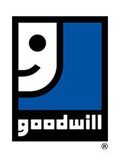By Julianne Hill, Program Specialist, Skilled Trades and Clean Tech, Goodwill Industries International
In today’s digital age, your online presence can be as important as your real-life presence. This blog post will cover best practices for building a solid professional online identity that can open doors to career opportunities.
Building a Professional Website or Portfolio
A personal website is an online portfolio that is a central hub for your professional life. Here are some tips for creating one:
- Choose a Professional Domain: Your domain name should ideally be your name or something close to it. This makes your site easier for people to find.
- Include Key Information: Your website should include your resume, your contact information, a brief bio, and samples of your work. Testimonials can also add to your credibility.
- Highlight Your Best Work: Showcase your most impressive work. This could include projects you’ve completed or any other tangible evidence of your skills.
- Use High-Quality Images: If your portfolio includes photographs or designs, ensure they are high-resolution and presented professionally.
- Include Detailed Descriptions: Don’t just show your work; talk about it. Include descriptions that explain what the project was, the role you played, what tools you used, and the results.
- Make it Easy to Navigate: User experience design is vital. Make sure your online portfolio is easy to navigate and well-organized.
- Include a Call to Action (CTA): What do you want people to do after reviewing your online portfolio? Should they contact you or check out more of your work? Include this as a call to action at the end of your portfolio.
- Keep It Updated: It is vital to keep your website updated to showcase your current experience and skills.
For more details on creating your online portfolio website, check out Indeed’s Career Guide.
Leveraging LinkedIn
LinkedIn is a vital tool for career growth. Here are some tips on how to make the most of your LinkedIn profile:
- Optimization: Your LinkedIn profile should be complete and up-to-date. You should use a professional photo, have a compelling headline, and make your summary compelling.
- Complete your Profile: Fill out all sections of your profile. This will include your headline, summary, work experience, education, skills, and endorsements. Your profile will give a better impression if it is complete and much more likely to appear in searches.
- Use a Professional Photo: Your profile picture is often the first thing people see. Ensure your photo looks professional and you are dressed appropriately for your industry.
- Headline & Summary: These should highlight your skills, experience, and what you bring to the table. Using keywords related to your industry will help your profile show in search results.
- All Relevant Experience: List all relevant work experience and your roles and accomplishments in each position. Relevant work experience is more than just paid work. You may also include internships, volunteer work, and significant school projects.
- Ask for Recommendations: Recommendations add credibility to your profile. Don’t be afraid to ask for recommendations. This could be from colleagues, former supervisors, or professors.
- Grow Your Network: Connect with classmates, colleagues, and industry professionals. If you send a personalized message with your request, it will increase the likelihood of acceptance.
- Use LinkedIn Learning: LinkedIn offers online courses through LinkedIn Learning. Taking and showcasing classes on your profile demonstrates your commitment to continuous learning and professional development.
- Be Active: Share updates regularly, engage with posts, and join relevant groups. This will increase your visibility.
Here are some links to additional information on building your LinkedIn profile:
How to Write a LinkedIn Summary
20 steps to a better LinkedIn profile in 2023
14 LinkedIn Profile Summaries That We Love (And How to Boost Your Own)
Professionalism on Other Social Media
Your behavior and posts on other social media platforms are an essential part of shaping your professional image. In an upcoming blog post, we will cover this topic in depth. For now, here are tips to keep your online presence professional.
- Keep it Clean: Do your posts on social media reflect the image you want to project? Be mindful of the photos and language you use.
- Showcase Your Interests: Social media platforms can give a fuller picture of who you are as an individual. They can be used to highlight your interests and hobbies.
Blogging
Blogging is another way to establish your expertise in your chosen field. Here are some tips on how:
- Choose your specialization: Write about topics that you are passionate about and that you have knowledge of.
- Provide Value: While the ultimate goal is to promote yourself online, keeping the reader in mind and providing value to them is important. The goal should be to educate, inform, and inspire your audience. This will showcase you as a trusted resource.
Networking Online
Networking online can help you connect with other professionals. Here are a couple of tips on how to network effectively:
- Join Groups: Join relevant groups on social media platforms such as LinkedIn, Facebook, or Industry-specific forums. Participate in discussions and share your insights.
- Connect with Others: Don’t be afraid to reach out to others. Engage with others’ posts and send personalized connection requests.
Maintain Your Online Presence
Building an online presence is an ongoing process. Profiles should be updated regularly. Engage with your network often. Monitor your online reputation to ensure your online presence is solid and effective.
A professional online presence is a powerful way to advance your career. Building takes time and effort, but the potential benefits far outweigh the effort. Don’t wait for tomorrow. Start building your online presence now!
Additional Resources:
Professional Networking: What It Is and How to Master It
How To List Networking Skills on a Resume (And 10 To Develop)
How To Network if You’re an Introvert
The Complete Guide To Networking



